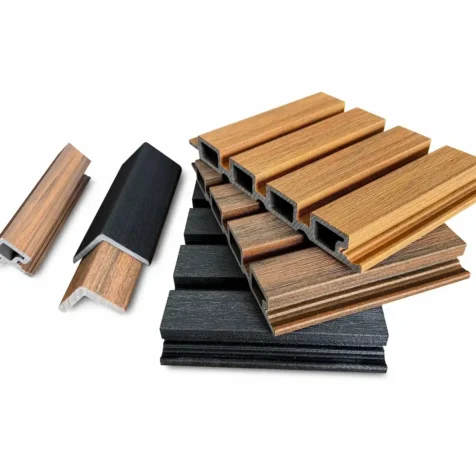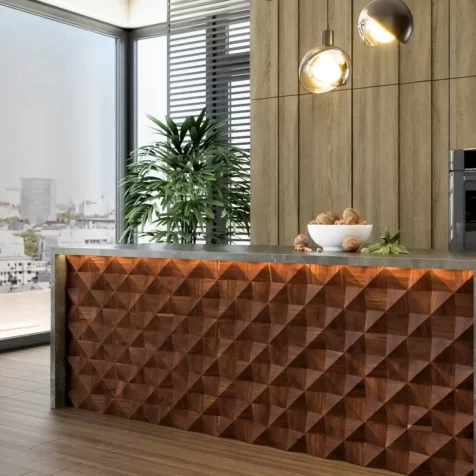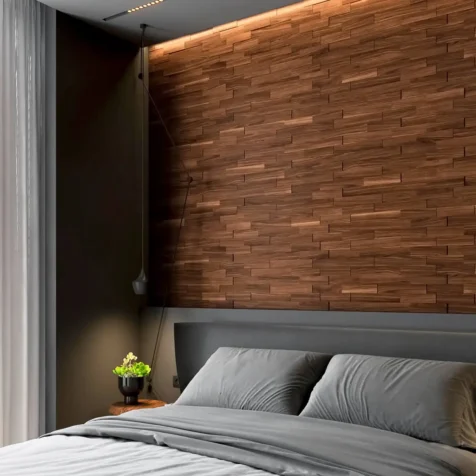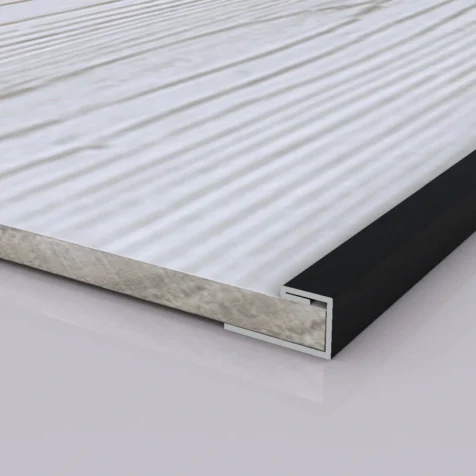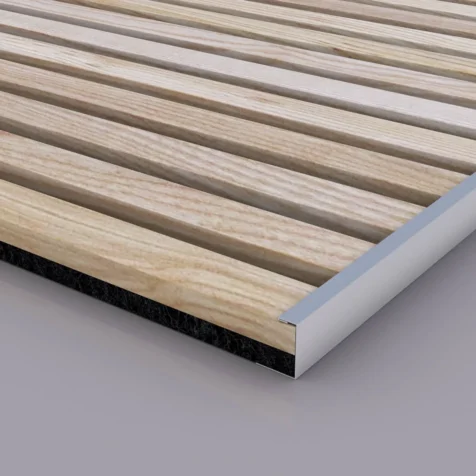What is Reclaimed Wood? – A Beginner’s Guide
Presently, about 2% of some tree species’ original planted land in the U.S. exists, highlighting the value of reclaimed wood. But what is reclaimed wood, exactly? The wood is from structures built in the 18th-20th century and is a great artistic addition, on top of being environmentally friendly to homes and commercial places.
In this section, we will explore the history of reclaimed wood, its strengths and weaknesses, how it is utilized, and how to choose good reclaimed wood planks.
What is Reclaimed Wood?
Reclaimed wood is wood retrieved from historic structures. It is derived from redwood, oak, Douglas fir, and pine trees. After cleaning and sanding, salvaged wood is highly valued by artisans because of its strength and character.
The use of salvaged wood for ships and buildings is centuries old, from the 18th and early part of the 20th centuries. Nowadays reclaimed wood is one of the most wanted materials to work with because of its aesthetic character, durability with fine grain, and other uses in residential, professional, and commercial settings.
Pros and Cons of Reclaimed Wood
What is reclaimed wood strong and weak at? It’s important to expect potential defects and purchase them from trusted suppliers.
Pros of Reclaimed Wood
- Environmentally friendly: Reclaimed wood goes a long way in helping lower levels of deforestation and waste in landfills. This material requires less energy to use than freshly harvested lumber and is more eco-friendly.
- Strength: Reclaimed wood is a great choice for high-foot traffic areas since it is frequently more robust and long-lasting than new wood because of its historical endurance.
- Originality: The allure of reclaimed wood stems from its extensive past centuries of being employed in historic structures, farms, and vessels with a distinctive appearance with a dark hue and strong texture.
- Aesthetics: Reclaimed wood’s worn and weathered appearance has a charm unmatched by fresh materials.
- Credits: Reclaimed wood flooring and furnishings can help earn credits for green buildings and other distinctions in the LEED rating system.
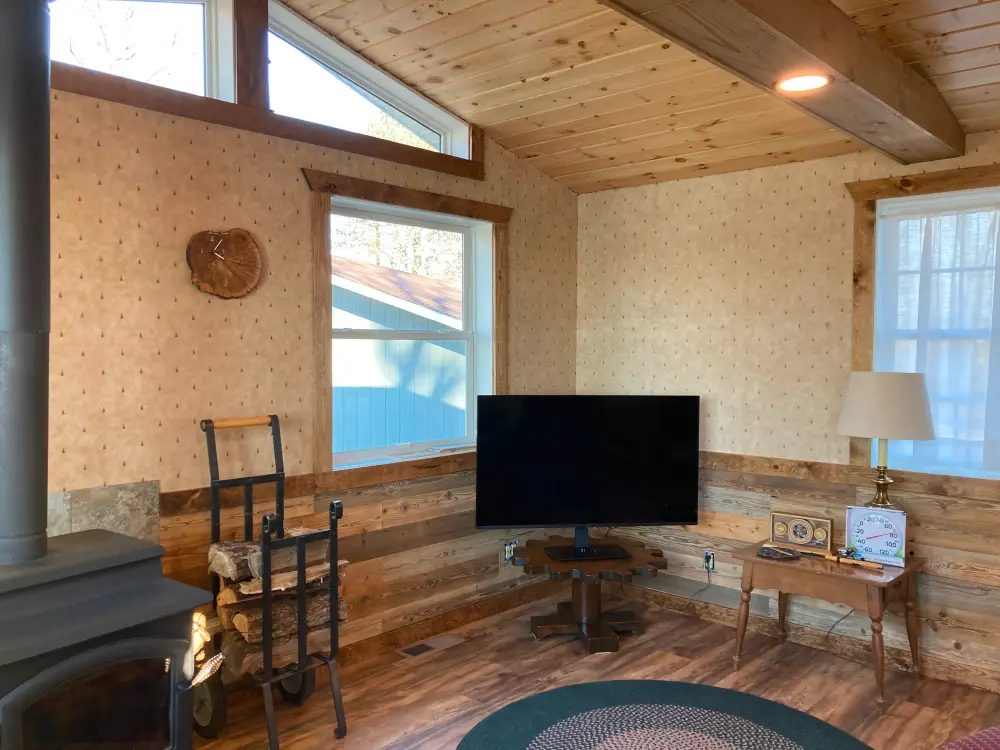
Cons of Reclaimed Wood
- Price: Due to the time-consuming work of locating and preparing it and expensive equipment rentals, reclaimed wood may be more expensive than new lumber.
- Legitimacy: As reclaimed wood’s popularity grows, counterfeit products are likely to enter the market.
- Hidden defects: Reclaimed wood may include unseen flaws like nails or other debris if not thoroughly examined.
With these drawbacks, keep in mind to buy reclaimed wood from reliable parties such as the Forest Stewardship Council or the Rainforest Alliance.

What is Reclaimed Wood Used For?
Reclaimed wood can be versatilely used in different spaces in your home. Here are the 6 popular ways for your consideration.
- Furniture
Reclaimed wood furniture has adaptable, long-lasting, and sustainable qualities that make it ideal for any space. Its distinct beauty and personality complement sturdy bed frames and rustic designs.
- Flooring
Reclaimed oak, beech, and maple wood are common materials used to make distinctive solid wood flooring. The face is lightly sanded so the wood is usable but keeps its rustic character. Its usually gently sanded surface ensures that wood is suitable for usage while retaining its rustic appeal.

- Decking
Reclaimed wood from demolished farms and industrial sites can be retained in different thicknesses or levelled for consistency.
- Feature Walls
Reclaimed woods are now being adapted to make bold accent walls and add value to dining and living spaces, offering a timeless aesthetic that new wood cannot replicate.
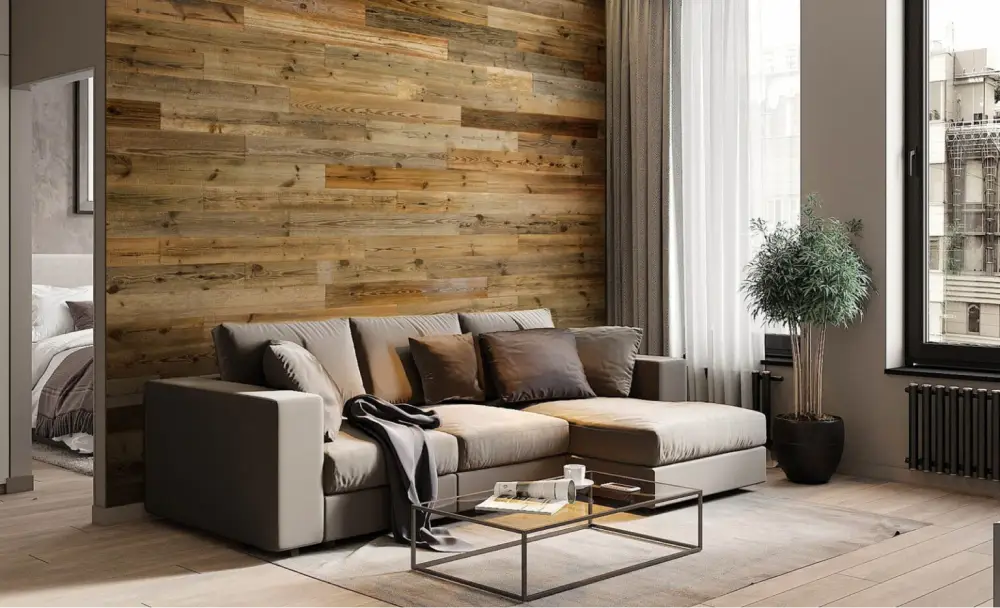
- Beams
Beams made of reclaimed wood are frequently utilized as structural elements, including posts, rafters, ridge beams, and trusses. They can be surfaced, sanded, or hand-hewn, or they can be left intact to showcase their original features.
- Mantels
A mantel made of reclaimed wood may provide a uniquely sentimental, cozy, artistic touch to your fireplace.
Stuck with how to transform your home with reclaimed wood? Get inspired with our Easy Reclaimed Wood Wall DIYs.
What To Consider When Buying Reclaimed Wood?
What is reclaimed wood buying caution? It is crucial to examine a few critical elements to ensure that you are making a sensible choice.
Type of wood
Sources of reclaimed wood include barns and other residential buildings, schools, and commercial and industrial buildings. Depending on the area and origin, common species include oak, pine, chestnut, maple, and cypress.
Age
Reclaimed wood may range from 20 to 400 years old. You can also check the wood rings. Aged wood often has narrower growth rings. This gives it a unique appearance and increased structural strength and lowers the probability of cracking or splitting.

Potential Defects
Test for rotted places by prodding with a screwdriver; avoid utilizing parts with significant rot. Also, while many providers dry wood in kilns to remove insects, keep an eye out for indicators of bug infestations as they can swiftly spread.
Certain wood types including ancient railroad ties, fence posts, and in some cases, barn wood may have been treated with chemicals inappropriate for interior usage. It is advised to conserve such wood for outside work.
Don’t forget a metal detector to identify concealed nails and screws.
Explore Reclaimed Wood Collection on WoodyWalls
So, what is reclaimed wood? Reclaimed wood conveys a sense of style, history, and environmental conscience apart from its unique characteristics and durability. Its aesthetic features make it an excellent choice for accent walls or eye-catching furniture in a variety of settings.
Seize the opportunity to improve your living spaces with the expertly curated reclaim wood assortments at WoodyWalls right now and get the perfect reclaimed wood components for your project!
FAQs
1. Is Reclaimed Wood Safe?
When purchased from reliable sources who value low VOC emissions and sustainable methods, reclaimed wood is a safe and environmentally beneficial material.
2. Does Reclaimed Lumber Change Color or Fade Over Time?
Yes, exposure to the environment can cause reclaimed wood’s color and patina to alter over time, but sealants can help minimize these changes.
3. Does Reclaimed Wood Require A Lot Of Maintenance?
While reclaimed wood does need regular maintenance, with the right treatment, its beauty may be preserved for decades.






